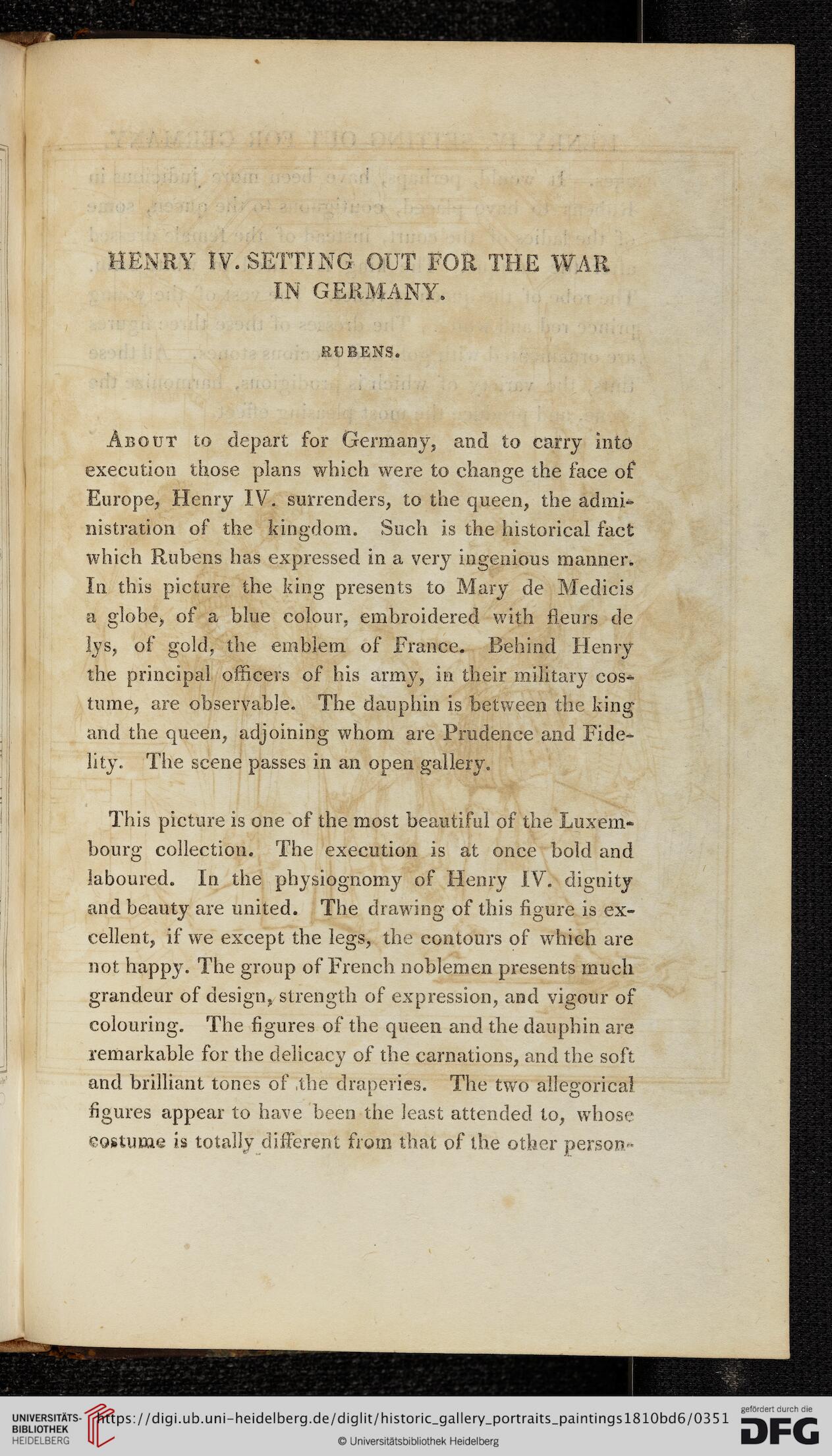HENRY IV. SETTING OUT FOR THE IVAR
IN GERMANY.
RUBENS.
About to depart for Germany, and to carry into
execution those plans which were to change the face of
Europe, Henry IV. surrenders, to the queen, the admi-
nistration of the kingdom. Such is the historical fact
which Rubens has expressed in a very ingenious manner.
In this picture the king presents to Mary de Medicis
a globe, of a blue colour, embroidered with fleurs de
lys, of gold, the emblem of France. Behind Henry
the principal officers of his army, in their military cos-
tume, are observable. The dauphin is between the king
and the queen, adjoining whom are Prudence and Fide-
lity. The scene passes in an open gallery.
This picture is one of the most beautiful of the Luxem-
bourg collection. The execution is at once bold and
laboured. In the physiognomy of Henry IV. dignity
and beauty are united. The drawing of this figure is ex-
cellent, if we except the legs, the contours of which are
not happy. The group of French noblemen presents much
grandeur of design, strength of expression, and vigour of
colouring. The figures of the queen and the dauphin are
remarkable for the delicacy of the carnations, and the soft
and brilliant tones of .the draperies. The two allegorical
figures appear to have been the least attended to, whose
costume is totally different from that of the other person-
IN GERMANY.
RUBENS.
About to depart for Germany, and to carry into
execution those plans which were to change the face of
Europe, Henry IV. surrenders, to the queen, the admi-
nistration of the kingdom. Such is the historical fact
which Rubens has expressed in a very ingenious manner.
In this picture the king presents to Mary de Medicis
a globe, of a blue colour, embroidered with fleurs de
lys, of gold, the emblem of France. Behind Henry
the principal officers of his army, in their military cos-
tume, are observable. The dauphin is between the king
and the queen, adjoining whom are Prudence and Fide-
lity. The scene passes in an open gallery.
This picture is one of the most beautiful of the Luxem-
bourg collection. The execution is at once bold and
laboured. In the physiognomy of Henry IV. dignity
and beauty are united. The drawing of this figure is ex-
cellent, if we except the legs, the contours of which are
not happy. The group of French noblemen presents much
grandeur of design, strength of expression, and vigour of
colouring. The figures of the queen and the dauphin are
remarkable for the delicacy of the carnations, and the soft
and brilliant tones of .the draperies. The two allegorical
figures appear to have been the least attended to, whose
costume is totally different from that of the other person-




